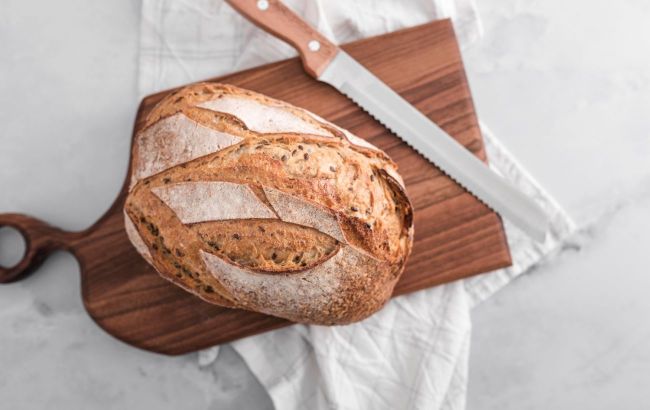Is brown bread healthier than white: Nutritionist names 5 popular myths
 Illustrative photo (Freepik)
Illustrative photo (Freepik)
Bread has long been a common element in the daily diet of many people. However, numerous myths have emerged around this product, which should not be believed, according to nutritionist Nataliia Samoilenko.
Why you should eat bread
Fiber
Since the body works to break down fiber, you will feel fuller for longer.
Blood sugar control
The body regulates blood sugar levels. Foods high in fiber tend to have a lower glycemic index.
Improves heart health
Whole grain bread contains a lot of fiber, which can help reduce the risk of cardiovascular diseases.
Bread has prebiotic effect
This fiber provides the gut with the nutrients necessary to support healthy digestion, immune function, and maintaining a healthy balance.
Bread fuels body
Complex carbohydrates give you energy that lasts longer, as your body takes time to digest them.
Improves mood
Serotonin is an important hormone for regulating our mood, and it can be boosted by consuming complex carbohydrates. This gives tryptophan a better chance to reach your brain.
Myths about bread
Brown bread is better than white
The best bread is whole grain. It contains a significant amount of fiber, which is beneficial for the entire body.
This product also has a prebiotic effect, stimulating the growth of beneficial gut flora, which strengthens the immune response, reduces inflammation, and lowers the risk of diabetes and cardiovascular disease.
Some varieties of brown bread contain more sugar than white bread.
Additionally, syrups or molasses are often added to give it a darker color.
Gluten in bread
Globally, only 1% of the population suffers from celiac disease. To determine if you're part of that percentage, you need to check if you have a gluten intolerance.
A general practitioner will order a blood test to check for antibodies that are typically present in people with celiac disease.
There’s no need to fear gluten if you don't fall into that 1%. A gluten-free diet doesn't provide any added benefits, and some gluten-free products may even contain fewer nutrients.
Yeast is bad
According to the nutritionist, there is no such thing as yeast-free bread. This label on a product is merely a marketing tactic. Even if yeast isn't used during the dough-making process, it doesn't mean it isn't present.
Different kinds of sourdough are essentially leavening agents containing numerous microorganisms.
Yeast is a source of selenium, B vitamins, folic acid, provitamin D, K, PP, and E, as well as minerals like potassium, calcium, zinc, magnesium, iron, and essential amino acids.
It's important to know that yeast itself dies during baking, but valuable nutrients remain in the bread.
Crispbread is healthier than regular bread
Crispbread is crunchy and has a texture similar to crackers. Quality crispbreads are made from whole grains through pressing, preserving all the components of the grain, including the outer layers and the germ.
Such crispbreads are a good source of vitamins, minerals, and slow-release carbohydrates.
However, if the ingredients include flour, sugar, and yeast, these are no longer dietary crispbreads but regular crackers, which have a similar effect on the body as white bread.
Bread is forbidden for diabetics
People with diabetes need to monitor their blood glucose levels closely.
White bread is rich in fast-acting carbohydrates and can cause sharp fluctuations in blood sugar levels. It's better to choose bread with a low glycemic index, which is digested slowly and doesn't cause rapid changes in blood sugar levels.

